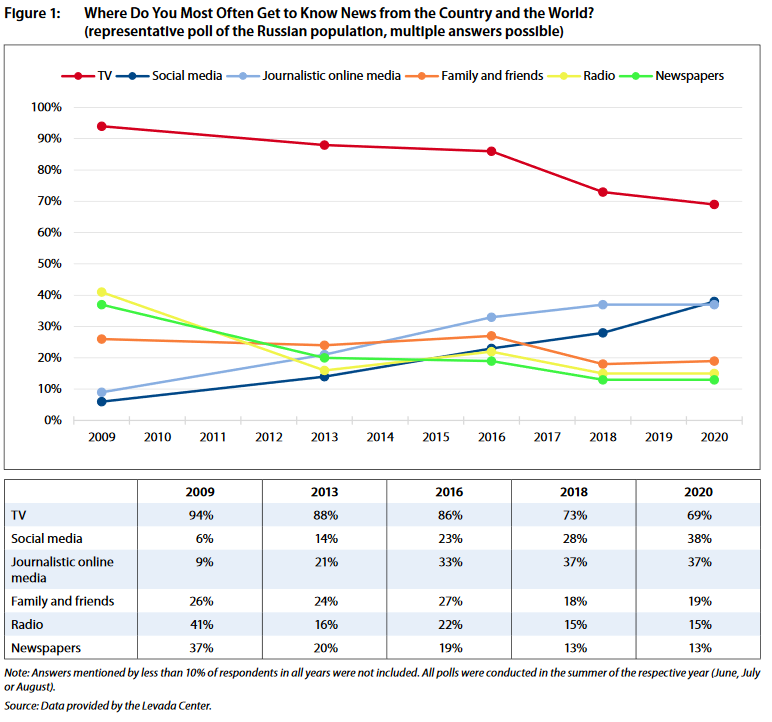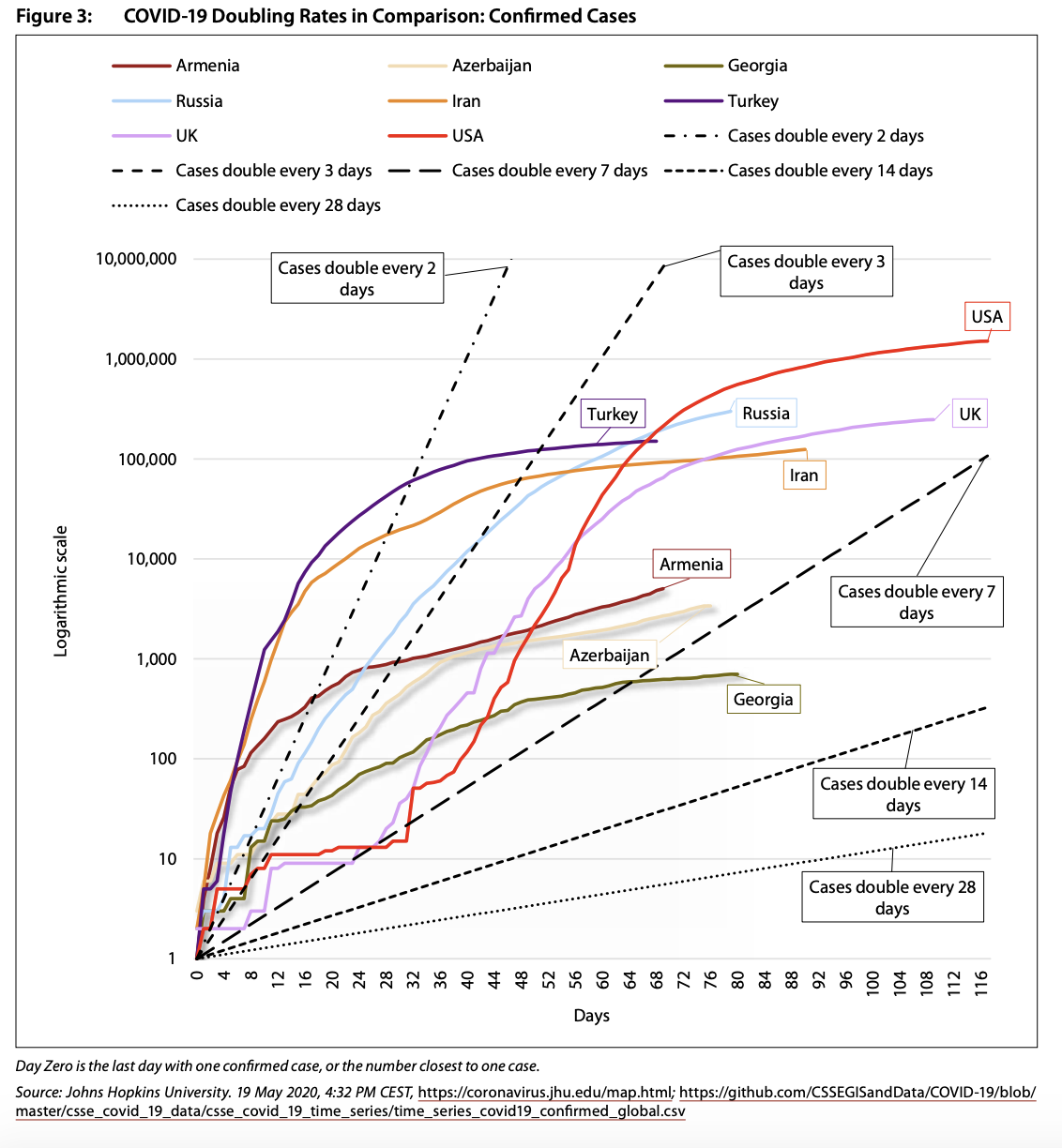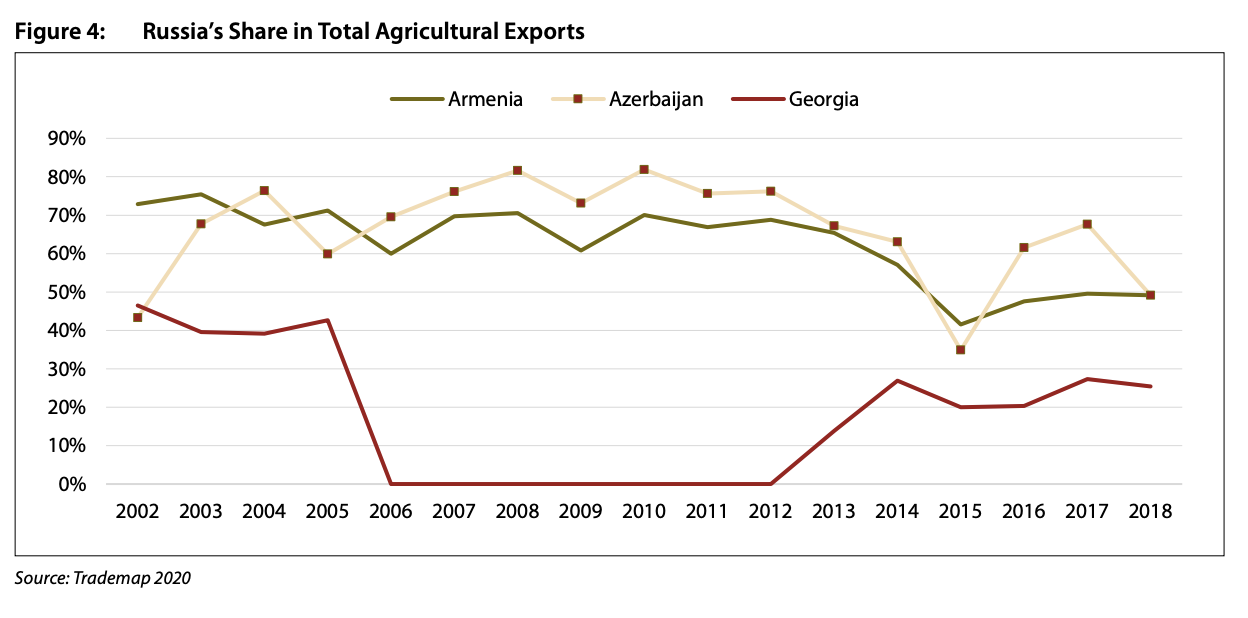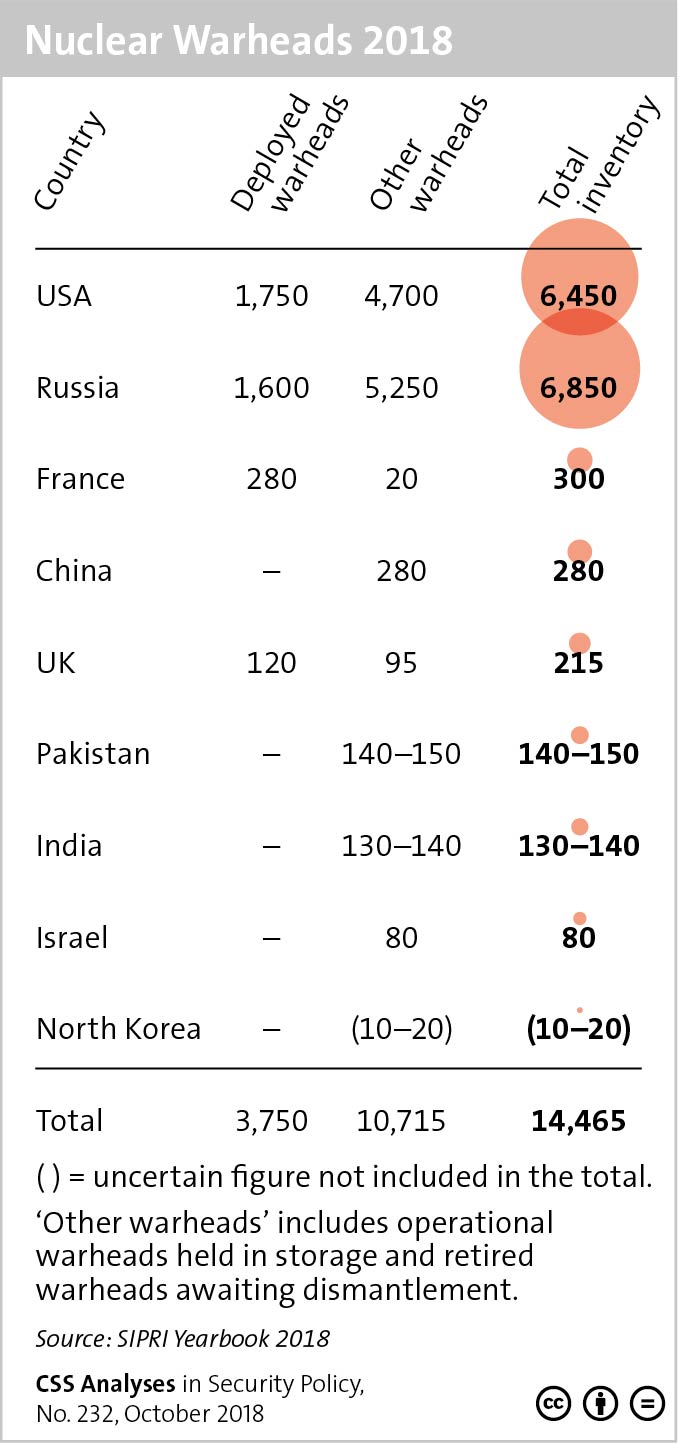
This graphic depicts the preferred news sources for the Russian population to know news from their country and the world between 2009 and 2020.
For more on Media Capture in Russia, the control of business and state actors over mass media, the mass walkout of all leading editorial staff of the business newspaper Vedomosti, and Russia’s take on social media read the latest Russian Analytical Digest here.




